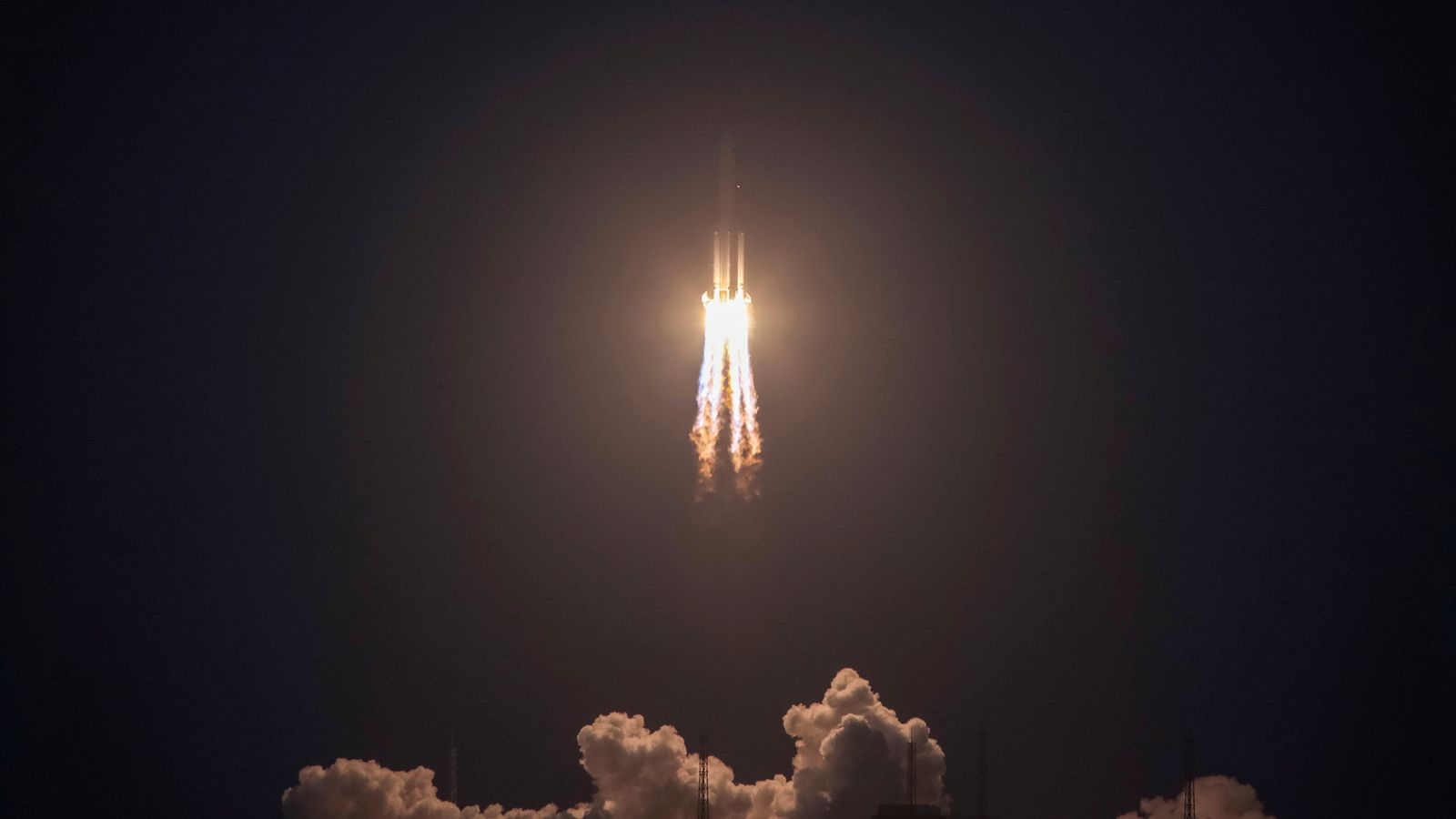Concerns are growing that a Chinese space rocket’s uncontrolled re-entry into Earth’s atmosphere could scatter debris across populated parts of the US.
The Long March 5B booster is too large to burn up on entry and will break up, potentially showering the ground with chunks of metal speeding at terminal velocity.
According to the Centre for Orbital and Reentry Debris Studies (CORDS) “over 88% of the world’s population lives under the re-entry’s potential debris footprint”.
Experts at CORDS from the Aerospace Corporation have warned that as a “general rule of thumb… between 20-40% of the mass of a large object will reach the ground” depending on the object.
In the case of the Long March booster, which weighs 23 metric tonnes, this means between 4.6 and 9.2 metric tonnes will hit the Earth – the equivalent of a dozen 1963 Volkswagen Beetle cars.
In a Q&A on Aerospace Corporation’s blog, the company said that the booster is one of the largest objects to re-enter Earth after reaching orbit.
Most of the time rocket boosters are not designed to reach orbit, but to launch their payloads into orbit while landing in a safe spot.
China warns US not to ‘play with fire’ over Taiwan during two-hour call between Xi and Biden
Nancy Pelosi’s badly timed Taiwan visit may have the US and China quietly walking into a crisis
China threatens ‘firm and resolute measures’ if US House Speaker Nancy Pelosi visits Taiwan
When spacecraft are de-orbited it is usually done in a controlled fashion, with the engines fired to drop the craft into Earth’s orbit and choose where it will land – often the so-called “spacecraft cemetery” at Point Nemo in the Pacific Ocean.
This is known as a controlled re-entry where the ultimate landing point and the debris footprint can be selected by the operators.
However in the case where the booster has gone into orbit and will fall back to Earth naturally, its final landing place won’t be known until just hours before it hits land.
It is not the first time that a Chinese booster has threatened populated areas when crashing back to Earth, and similar uncontrolled re-entries took place in 2021 and 2020.
In May 2020, pieces from the booster came down over the Ivory Coast, according to an analysis by astronomer Jonathan McDowell, damaging several buildings but leaving no one injured.
In an article responding to the most recent concerns, China’s state-owned newspaper the Global Times claimed the Western media response showed “sour grapes”.
The newspaper also claimed that China had a “flawless safety record” regarding its uncontrolled re-entries, despite Mr McDowell’s analysis.
It added that the criticisms were smears designed to undermine China’s successes in the aerospace sector because the US “is running out of ways” to stop that development through other means.








